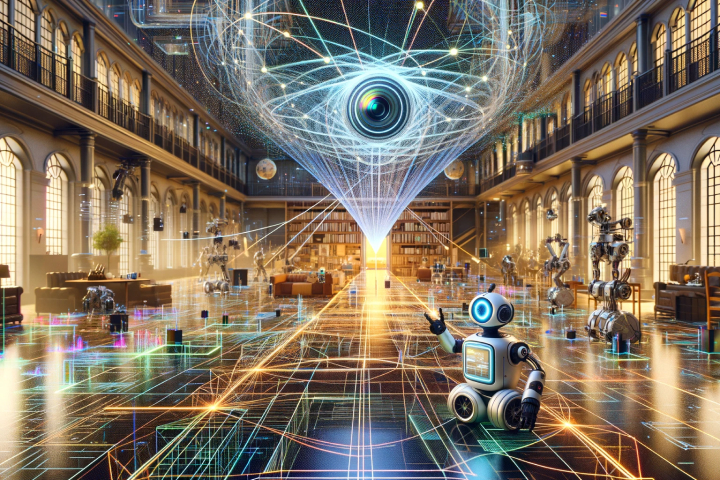
In the realm of technological advancements, particularly in the fields of robotics and augmented reality (AR), the accuracy and efficiency of camera localization play pivotal roles. The groundbreaking paper titled “Improved Scene Landmark Detection for Camera Localization” by Tien Do of Tesla and Sudipta N. Sinha from Microsoft, emerges as a beacon of innovation, addressing the critical challenges faced by previous camera localization methods. This paper not only delineates the shortcomings of existing techniques but also introduces a novel approach that significantly enhances the performance of Scene Landmark Detection (SLD) methodologies.
Historically, the task of camera localization has been dominated by structure-based methods. These techniques, while accurate, rely on the extensive storage of 3D scene point clouds and matching local 2D image features to these points, leading to several drawbacks including substantial storage requirements, slow processing times, and raised privacy concerns. The advent of learning-based localization methods promised to mitigate these issues by eliminating the need to store 3D scene models. However, these newer methods have struggled to achieve the high levels of accuracy provided by their structure-based counterparts.
The authors of this paper critically analyze the limitations inherent in previous SLD methodologies, notably the constraints posed by insufficient model capacity and the detrimental impact of noisy labels on training accuracy. Addressing these challenges head-on, the paper proposes a refined SLD approach that employs Convolutional Neural Networks (CNNs) for the detection of salient, scene-specific 3D points, or landmarks, and the computation of camera poses from 2D-3D correspondences. This approach is groundbreaking in enhancing accuracy without imposing additional computational burdens.
A cornerstone of this paper’s methodology is the innovative subdivision of landmarks into smaller, manageable subgroups, with separate networks trained for each subgroup. This strategy effectively circumvents the limitations posed by insufficient model capacity, enabling the handling of a larger set of landmarks without a corresponding increase in computational complexity. Furthermore, the paper introduces an improved method for generating training labels through dense reconstructions. This method significantly enhances the reliability of landmark visibility estimates, particularly under varying lighting conditions, which is a common challenge in indoor localization scenarios.
Another significant contribution of this research is the development of a compact and memory-efficient architecture known as SLD*. This new model streamlines the landmark detection process by eliminating certain components found in traditional SLD architectures, such as the NBE network and upsampling layers. Instead, SLD* focuses on directly predicting high-resolution heatmaps, reducing the model’s memory footprint and simplifying the training process. This streamlined approach does not compromise accuracy, as demonstrated through extensive evaluations of the challenging INDOOR-6 dataset. The results reveal that the SLD* model achieves accuracy levels comparable to those of state-of-the-art structure-based methods while offering significant improvements in speed and storage efficiency.
The implications of this research extend far beyond the confines of the academic community, with substantial real-world applications in both robotics and augmented reality. In robotics, the enhanced accuracy and efficiency of camera localization afforded by the SLD* model can lead to more sophisticated navigation and interaction capabilities within complex environments, particularly in indoor settings. For augmented reality applications, the improvements in localization accuracy promise to elevate the user experience, offering more immersive and reliable AR interactions.
“Improved Scene Landmark Detection for Camera Localization” stands as a significant milestone in the field of camera localization, addressing critical challenges and setting new benchmarks for accuracy and efficiency. The methodologies and innovations presented in this paper not only advance the state of the art but also pave the way for practical applications that can enrich our interactions with technology. From more responsive and capable robotic assistants to enhanced AR experiences, the societal benefits of these advancements are immense, highlighting the importance of continued research and development in this dynamic field.

Our vision is to lead the way in the age of Artificial Intelligence, fostering innovation through cutting-edge research and modern solutions.